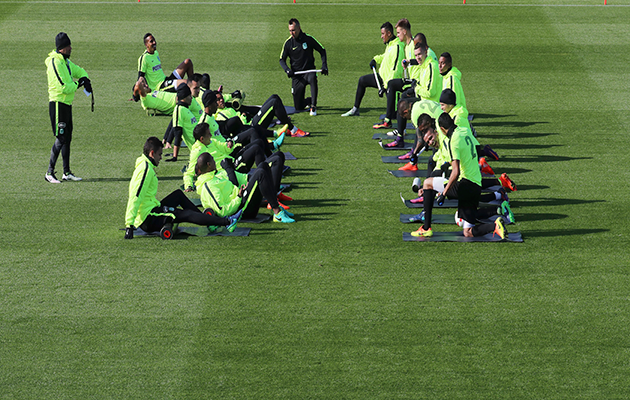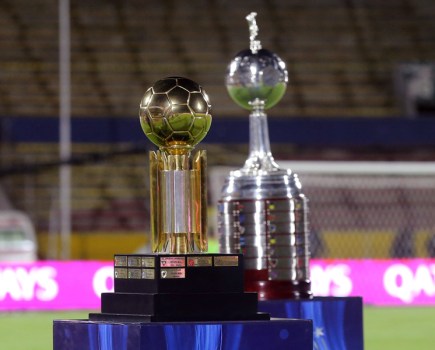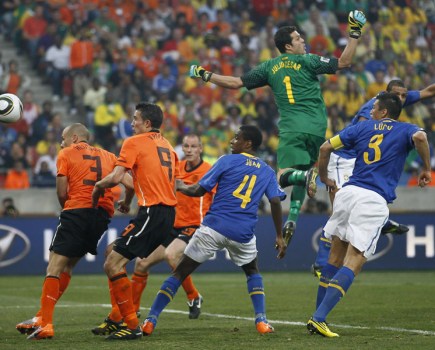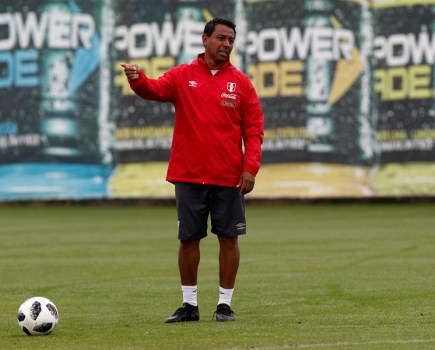It was always unlikely that Atletico Nacional would be able to win two titles on the same day, on opposite sides of the planet. The first team squad are in Japan, representing South America in the Club World Cup, and hoping to make it to the final on Sunday – the same day that the Colombian league comes to a climax.
Nacional were through to the semi final, and, giving a game to their reserves they drew 1-1 away to Santa Fe of Bogota in the first leg. But now, back in Medellin for the return match, they were down to the reserves of the reserves. With 25 players in the Far East, they were forced to field in effect an Under-21 side. They lost 4-0.
So there will be no league title. But can they pull off a surprise and come home with the Club World trophy?
South America’s recent record in the tournament is not encouraging. Ever since the competition was inaugurated in 2005 the champions of the Copa Libertadores have had to struggle their way through the semi final, losing to African opposition on two occasions. Mamelodi Sundowns are no longer around to inconvenience the Colombians – the South Africans fell to Kashima Antlers, who meet Atletico Nacional on Wednesday. Kashima have home advantage, and have picked up momentum after seeing off Auckland City before the African champions. Nacional, though, will consider themselves strong favourites – though that will not be the case if they meet Real Madrid in the decider.

Easy on the eye…Macnelly Torres (centre) in action for Atletico Nacional.
Assuming this is the final line up, it will be fascinating to see whether the Colombians can impose their usual attractive passing game against Cristiano Ronaldo and company. At the top of their game, Atletico Nacional can be very easy on the eye. Macnelly Torres is a wonderfully old fashioned playmaker, full of imaginative ideas. He clicked into an instant relationship with centre forward Miguel Borja, signed in the middle of the year. Quick and uncomplicated, Borja is dangerous, his threat amplified by the way that Nacional open up the pitch, with the string Orlando Berrio on the right and the tricky Andres Ibarguen cutting in from the left.
Coach Reinaldo Rueda, though, has a dilemma to ponder. His pair of centre backs lack pace. Team captain Alexis Henriquez was never quick, and now he is at the veteran stage. He is an intelligent reader of the game, and a fine organiser of those around him. But his lack of speed can be exposed, especially now that he is alongside Felipe Aguilar, a centre back in a similar mould of tall, commanding and not especially mobile.
The pair, then, have a natural tendency to drop deep, opening up space in a vulnerable area. How will Rueda fill it?
The key question here is what will be the shape and composition of his central midfield trio. At their passing best, Nacional play a triangle that points backwards; one holder and then the lively Venezuelan Alejandro Guerra to link up with Torres. But can such a bold formation be risked against the likes of Real Madrid? Might it be advisable to invert the triangle, and have two defensively minded midfielders? It would mean leaving Guerra on the bench – or perhaps even Macnelly Torres, in the hope that he can be most effective if introduced as space opens up in the second half.

Atletico Nacional coach Reinaldo Rueda will have much to ponder if his side reach the Club World Cup final.
Reinaldo Rueda’s problem gets to the heart of the contemporary reality of the South American club game, and helps explain just why the continent’s teams have been so unimpressive in recent versions of the Club World Cup.
The side that won the Colombian league title a year ago conceded just 11 goals in 26 games. The foundation for such stability was the fine, and complimentary partnership between Henriquez and Oscar Murillo, a centre back of little ambition on the ball but blessed with pace. Then Murillo was sold to Pachuca in Mexico – he has gone on to become first choice for the Colombian national team.
This year, then, young Davinson Sanchez was promoted to take Murillo’s place. He was raw, but guided by Henriquez he slotted in well as Nacional won the Libertadores title – so well that he was then sold to Ajax of Holland. He, too, has gone on to represent Colombia this year in World Cup qualification. Felipe Aguilar, then, was a third partner for Alexis Henriquez in the course of nine months.
This constant selling of key players is not a problem that the winners of Europe’s Champions League have to confront. Rueda has continually had to rebuild – a process Atletico Nacional will have to go through once again after they come home from Japan.
This is the importance of the game the youngsters played on Sunday against Santa Fe in that domestic semi final. Before long many of these players will be in the full strength line up. Despite the 4-0 scoreline, Nacional have nothing to be ashamed of. They were undone in the very place that an under-21 side might be expected to struggle against experienced opponents – set pieces played into their penalty area. And they displayed lots of promise. Left footed attacking midfielder Juan Pablo Ramirez has rare talent. Central midfielder Albin Dominguez is neat and well trained. And 17 year old centre back Carlos Cuesta is full of class, and has not looked out of place in recent weeks when given opportunities in the genuine first team. The 2016 Club World Cup has come a little too early for him. But before long Cuesta and company might be playing an important part in the ongoing story of Atletico Nacional.







